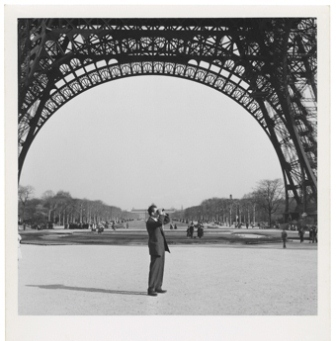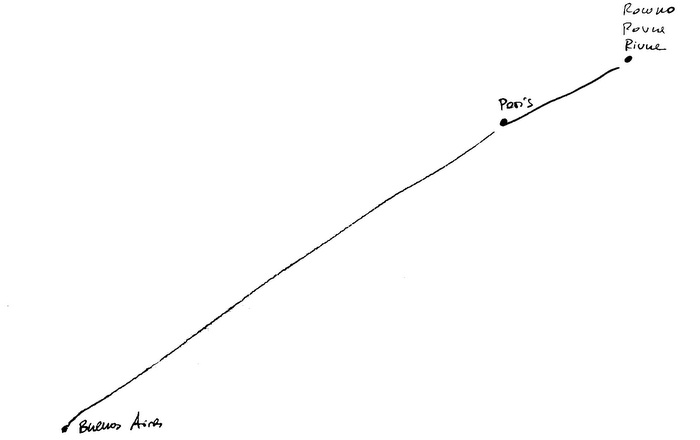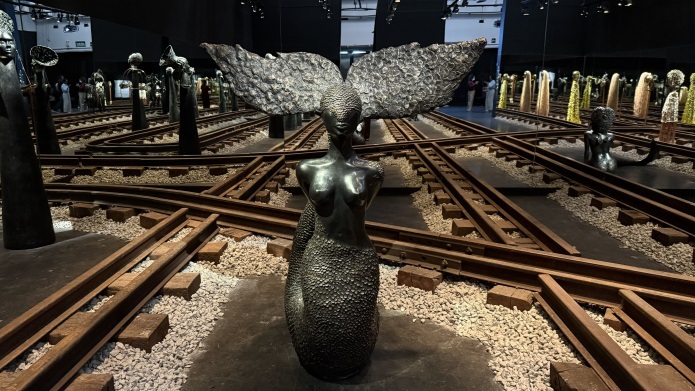MoMA presents the first comprehensive American survey of the artist Walid Raad (b. 1967, Lebanon), a pivotal figure in contemporary art whose work in the last 25 years investigates distinctions between fact and fiction, and the ways in which we represent, remember, and make sense of history. Walid Raad, on view from October 12, 2015, through January 31, 2016, brings together over 200 works across various mediums—including photography, video, sculpture, and performance. Dedicated to exploring archives and photographic documents in the public realm, the role of memory and narrative within discourses of conflict, and the construction of histories of art in the Arab world, Raad’s work is informed by his upbringing in Lebanon during the civil war (1975–90) and by the socioeconomic and military policies that have shaped the Middle East in the past few decades. Walid Raad is organized by Eva Respini, Barbara Lee Chief Curator, The Institute of Contemporary Art/Boston, with Katerina Stathopoulou, Curatorial Assistant, Department of Photography, MoMA. The exhibition will travel to the Institute of Contemporary Art/Boston, February 24–May 30, 2016, and to the Museo Jumex, Mexico City, October 13, 2016–January 14, 2017.
The exhibition focuses on two of the artist’s long-term projects: The Atlas Group (1989– 2004) and Scratching on things I could disavow (2007–ongoing). Under the rubric of The Atlas Group, a 15-year project exploring the contemporary history of Lebanon, Raad produced photographs, videotapes, notebooks, and lectures that related imaginary stories. The stories were inspired in part by real events and extensive research in Lebanon’s various archives and elsewhere. Raad’s recent work has expanded to address the Middle East region at large. His ongoing project Scratching on things I could disavow examines the recent emergence in the Arab world of new infrastructures for the visual arts—art fairs, biennials, museums, and galleries— alongside the geopolitical, economic, and military conflicts that have consumed the region in the past few decades. The exhibition also includes a series of walkthroughs with the artist in MoMA’s Donald B. and Catherine C. Marron Atrium up to four times a week for the duration of the exhibition.
According to Raad, The Atlas Group project was established in Beirut in 1989 to preserve, study and produce audio, visual, literary, and other documents that shed light on Lebanon’s history. Each Atlas Group document is attributed to a source—including the colorful historian Dr. Fadl Fakhouri—who, like the organization, is fictional. The Atlas Group is about the limits and possibilities of writing, documenting, and remembering history dealing in partial information, rumor, and mediated news reports. Raad's work is predicated on a reality in which recent events are accessed not only through statistics and facts, but equally through experiences, memory, and feelings.
None of the “documents” produced by The Atlas Group is wholly imaginary: these photographs, texts, and videos are borrowed from original sources, such as newspapers, or from Raad’s own street photography. But when Raad rephotographs or scans them and presents them through storylines, literary titles, narrative wall texts, and engaging performances, they move into the imaginary realm referred to by Raad as “hysterical documents.” The Atlas Group purports to be involved in absurdly exhaustive tasks like locating every car bomb detonated during the civil war (My neck is thinner than a hair: Engines, 1996–2001). Violence is rarely pictured in The Atlas Group archive, which focuses instead on peripheral details like the purported gambling habits of fictional historians during the civil war (Notebook volume 72: Missing Lebanese wars, 1989/1998). Even human figures are rare, and when they exist, they are microscopic specks in a bucolic landscape (We are a fair people. We never speak well of one another, 1994/2013).
A number of Atlas Group works are attributed to Dr. Fadl Fakhouri, including Notebook volume 72: Missing Lebanese wars, Notebook volume 38: Already been in a lake of fire (1991/ 2003), and Miraculous beginnings/No, illness is neither here nor there (1993/2003). Dr. Fakhouri, an esteemed, recently deceased, imaginary historian of the Lebanese Civil War whose papers were donated to The Atlas Group, lends the project an air of authenticity. Civilizationally, we do not dig holes to bury ourselves (1958–59/2003), is a series of small black-and-white photographs purportedly taken by the scholar during his first and only trip to Europe, in the late 1950s. These self-portraits capture the lone Fakhouri lounging in hotel rooms, reading in cafés, and viewing the tourist sites of Paris and Rome. The images, repurposed from family snapshots and altered digitally, actually feature Raad’s father.
Let’s be honest, the weather helped (1998/2006) comprises images of notebook pages featuring black-and-white photographs that Raad himself took in Beirut during and after the civil war. These images of pockmarked buildings and bombed-out neighborhoods are overlaid with different-sized colored disks that map bullets and shrapnel, again collected by Raad after bombings and battles when he was a child in Beirut. The colors are linked to the national origins of the ammunitions and form a more expressive and poetic image, rather than one that is purely meant to document. The seemingly arbitrary title Let’s be honest, the weather helped also undermines the claim to veracity inscribed in the work. The weather is a recurring motif in The Atlas Group; the banal staple of small talk, it is neutral, unpredictable, and acts as an equalizer, circumscribing the direct address of violence.
Although The Atlas Group is said to have been completed in 2004, Raad continues to work on it. In We are a fair people. We never speak well of one another (1994/2013), Raad has collaged a series of color photographs originally taken by a relative who had traveled the countryside of Lebanon and Syria before the Lebanese Civil War with found black-and-white newspaper photos of militia leaders assassinated or murdered during the war. Although Raad avoids commenting on specific events, the new works signal the continuing importance of investigating the ways in which violence and its image affect our reading and understanding of historical and current affairs, particularly in the Middle East.
Scratching on things I could disavow, which Raad began in 2007, is an interrelated series of photographs, videos, sculptures, installations, and performances. While each of the several series within this larger body of work stands individually, taken together they constitute an examination of how art history is being forged within the new infrastructures for art in the Arab world. If The Atlas Group appropriated the authority of the archive to probe how history is written, read, and remembered, Scratching on things I could disavow uses the conventions of the museum display and the authority of the curatorial voice to introduce a performative space for art; the works are all different sizes and no two structures are the same.
One such work, Appendix XVIII: Plates 22–257 (2008–14), is a series of photographs drawn from documents of real exhibitions and art activities in the Arab world: books, catalogues, posters, invoices, and invitations. After scanning these documents, Raad erased or rearranged their graphic elements, signs, and letters, producing works that, although colorful, are largely monochromatic. Plates 22–24: A History of Venice I–III, for example, is drawn from promotional materials for the Lebanese Pavilion at the Venice Biennale of 2007, the first time Lebanon was represented with its own national pavilion there. Beyond the title, however, this reference is unclear, since the text and graphics have been removed or rearranged, leaving a predominant field of red.
Many of the works in Scratching on things I could disavow picture not art objects but their effects, such as reflections (Preface to the second edition, 2012). Blank walls, polished floors, and empty doorways become active players in works such as Section 88: Views from outer to inner compartments, the title of both a video and a sculptural installation. Raad devised a set of doorways that are fashioned from wood and mimic the architectural style of Western museums of the 19th century. This set-like quality is enhanced in the MoMA display with theatrical lighting that casts strong shadows. Footnote II (2015), a sculptural installation conceived for the MoMA exhibition, features a rearranged set of works from Raad’s two-year research in the Louvre’s department of Islamic arts .
In the Marron Atrium, Raad will present Scratching on things I could disavow: Walkthrough up to four times a week for the duration of the exhibition. Raad has devised five platform stages for the presentation, each with a floor based on that of a different art space, ranging from the poured concrete of a contemporary art gallery to a herringbone wood-parquet motif taken from New York’s Metropolitan Museum of Art. The artworks on these stages—the exhibition’s galleries—function like props, signaling that the art is just one part in a larger performative project. The performance begins in front of Raad’s video installation Translator’s introduction: Pension arts in Dubai (2012), where the artist launches into an overview of the complex structure of the Artist Pension Trust (APT), a real organization that signals a significant shift in the collection of art and in the speculative practices of the art market. The installation includes a digitally animated chart recalling the famous chart of the development of modern art that Alfred H. Barr, Jr., the founding director of MoMA, published in 1936. Raad’s APT chart attempts to track and expose the control of assets, and he explicates it like an investigative journalist or conspiracy theorist. He next invites his audience to move to another “gallery,” where, by tapping his cell phone, he makes the lights fade in one area and come up in another, signaling a new act. His monologue takes a turn, as he recounts how an unnamed Arab is physically incapable of entering a new museum built at some as yet undefined time in the next 10 years and matter-of-factly reveals that he has received information telepathically from artists in the future. Like his Atlas Group lectures, the Scratching on things I could disavow performance unlocks the meaning of all of the works that constitute the series. The full performance schedule will be posted on MoMA.org in September.
ARTIST BIO:
Walid Raad was born in 1967 in Chbanieh, Lebanon. In 1983, he left Beirut for the United States, where he attended high school and college. Raad enrolled at the Rochester Institute of Technology, where he studied photography and Middle Eastern studies and earned his PhD in visual and cultural studies from the University of Rochester. Raad frequently returns to Lebanon, and is deeply involved in the artistic community there. He currently lives in New York, and has been an Associate Professor of Art at The Cooper Union since 2002. Recent exhibitions of Raad’s work in Europe have been met with enthusiasm and critical accolades. Solo exhibitions have been held at Museo Madre, Naples (2014), Carré d'Art, Nîmes (2014), the Louvre, Paris (2013), Hasselblad Foundation, Gothenburg, (2011), Kunsthalle Zürich (2011), Whitechapel Gallery, London (2010), and Hamburger Bahnhof, Berlin (2006).
SPONSORSHIP:
The exhibition is made possible by The Andy Warhol Foundation for the Visual Arts, The Jill and
Peter Kraus Endowed Fund for Contemporary Exhibitions, MoMA’s Wallis Annenberg Fund for
Innovation in Contemporary Art through the Annenberg Foundation, and The Contemporary Arts Council of The Museum of Modern Art.
Major support is provided by Oya Eczac?ba??; A. Huda and Samia Farouki; and by Elham and Tony
Salamé, Aïshti Foundation Beirut.
With generous funding from Basil and Raghida Rahim; Plurimi Foundation, Maya and Ramzy Rasamny; Rana Sadik and Samer Younis; and an anonymous donor.
Research and travel support was provided by The International Council of The Museum of Modern Art.
MoMA Audio+ is supported by Bloomberg Philanthropies.
PUBLICATION:
The exhibition will be accompanied by a fully illustrated 192-page scholarly publication with a major essay by the exhibition curator Eva Respini, and contributions by Finbarr Barry Flood and Walid Raad, that surveys nearly three decades of Raad's practice in a variety of mediums. Essays by the exhibition curator Eva Respini and scholar Finbarr Barry Flood place Raad’s art in the international context of contemporary art making, and a special eighteen-page visual contribution by Raad provides insight into his practice. 192 pages, 216 illustrations. Hardcover, $55. Published by The Museum of Modern Art, New York. Distributed to the trade by ARTBOOK|D.A.P. in the United States and Canada, and by Thames & Hudson outside the United States and Canada.
AUDIO TOUR:
The audio tour accompanying the exhibition features a newly recorded commentary of The Atlas Group project by Walid Raad. Additionally, the full 55 minute performance of Scratching on things I could disavow: Walkthrough, narrated by the artist, will be available on the audio tour. MoMA Audio+ is available free of charge at the Museum and is also available for streaming and download on MoMA's free app on iTunes, MoMA.org/m, and MoMA.org. MoMA Audio+ is supported by Bloomberg Philanthropies.
HEARING LOOPS:
In order to serve visitors with hearing loss, Walid Raad includes induction hearing loops for sound amplification. Visitors to the installation can turn their hearing aid or cochlear implant to T-Coil mode to hear enhanced sound effortlessly.
Walid Raad
October 12, 2015—January 31, 2016
Special Exhibitions Gallery, third floor
The Donald B. and Catherine C. Marron Atrium, second floor















